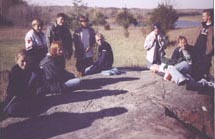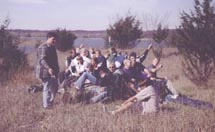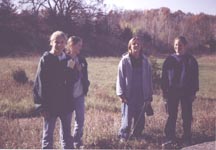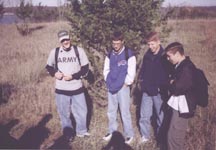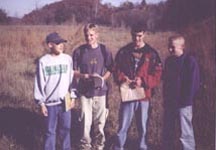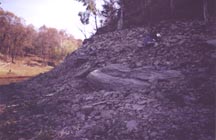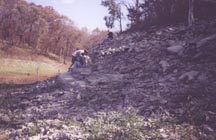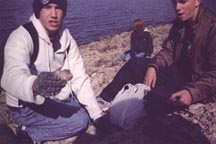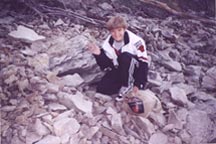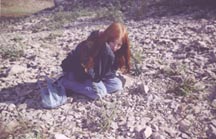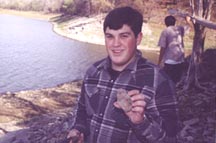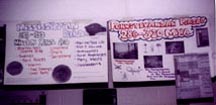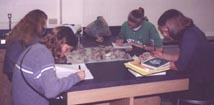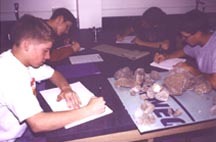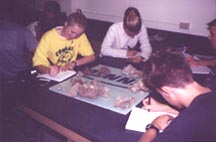Fossiliferous Investigations
Brad Schoon planned a field trip as the culmination of our study of geologic time and fossils. The site we visited was Stainbrook Geologic Preserve, near Iowa City, Iowa. This site exhibits Pleistocene glaciation and a Devonian reef outcropping. The purpose of the trip was to observe and collect real fossil specimens that students had previously seen only in the lab.
We began at "The Rock," a large, glacially striated (scratched and grooved) section of bedrock exposed during quarry operations in the early 1900s. The parallel striations show the direction of glacial movement during the Pleistocene Epoch or "Ice Age," which ended only 10,000-15,000 years ago.
On the trip to Iowa City, we assigned a task to each team of four students--to create and later perform a short song, chant, cheer or rap that would identify their team and state their purpose for being on this trip. The "team-building" activity encouraged cooperation and familiarity among team members and produced some funny and memorable moments.
Across the road from the Stainbrook Geologic Preserve students got to "round up" some critters of their own. A large, Devonian-aged reef deposit is exposed along beautiful Lake McBride. Students were excited to use the knowledge gained in the labs to identify and name species of corals, crinoids, trilobites, stromatolites and brachiopods. Specimens were collected for further study back at school.
On our return, using information gathered previously from students' reseach and presentations, students identified their fossils and sketched what they looked like when they were alive. They discovered how these animanls ate, moved and reproduced. Many said that they had seen these things in the rocks before but never knew what they were. They said it was cool to know what they were and even have names for them!

